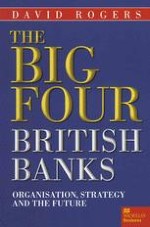1999 | Buch
Über dieses Buch
This book is a cutting-edge exploration of the UK commercial banking industry, as reflected primarily in the experience of the four main clearing banks: Barclays, Lloyds, Midland and NatWest. What will the industry look like in the future? What strategies, cultures and organisational forms will distinguish the survivors from the non-survivors? Will the dominant form be the highly diversified, global, financial supermarket, the so-called universal bank, the more focused niche player, both, or some other type? To answer these questions, David Rogers draws upon very high level access to the leading players in this evolving industry.
Anzeige
